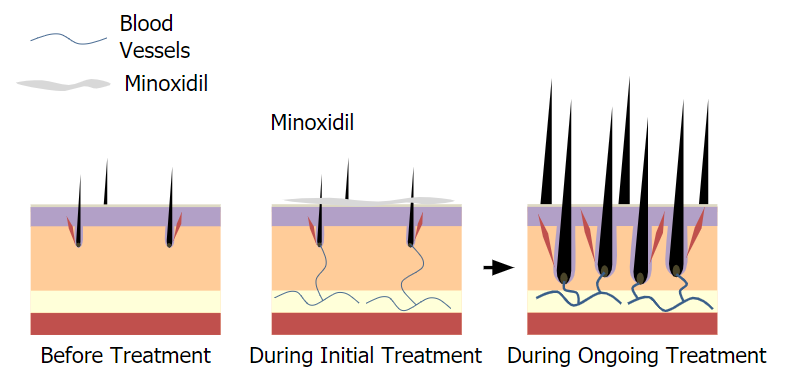The second medication used to treat AGA is minoxidil. Minoxidil was accidentally discovered to positively influence hair growth when patients taking the drug for hypertension (high blood pressure) reported unwanted hair growth as a side effect. Its molecular action for hypertension involves vacillation or expansion of arteries to promote potassium channel use and decrease blood pressure.
For the treatment of hair loss its function is likely mediated by increasing blood flow to the scalp via potassium channels opening, allowing growth factors already in the blood to more often reach the hair follicles to stimulate growth.
The efficacy of this drug for hair growth is supported by many clinical research trials13. Minoxidil solution or foam is applied directly to the scalp 1-2 times daily as opposed to in oral form due to its ability to decrease blood pressure and increase water retention in normally healthy people. The treatment is simple and cost-effective, but therapy should be started in the early stages of AGA to be most effective and continuous use is necessary for long-term results.

Treatment of Androgenetic Alopecia with minoxidil (Rogaine). Upon topical treatment of affected areas blood vessels dilate and provide extra nourishment to the dermal papilla improving hair growth.
The most concerning adverse effects of this topical therapy, especially the alcohol-based formulation, are contact dermatitis (redness and irritation in the specific location where the lotion/cream/foam contacts the skin) and abnormal hair growth in areas other than the scalp (also termed hypertrichosis).
Allergic reactions may occur in response to ingredients in the solution, but rarely to the drug specifically. With the foam formulation, application site reactions are less likely in the absence of the alcohol base. Noticeable hair shedding upon initial treatment is temporary as the dormant hair follicles “wake up”.


